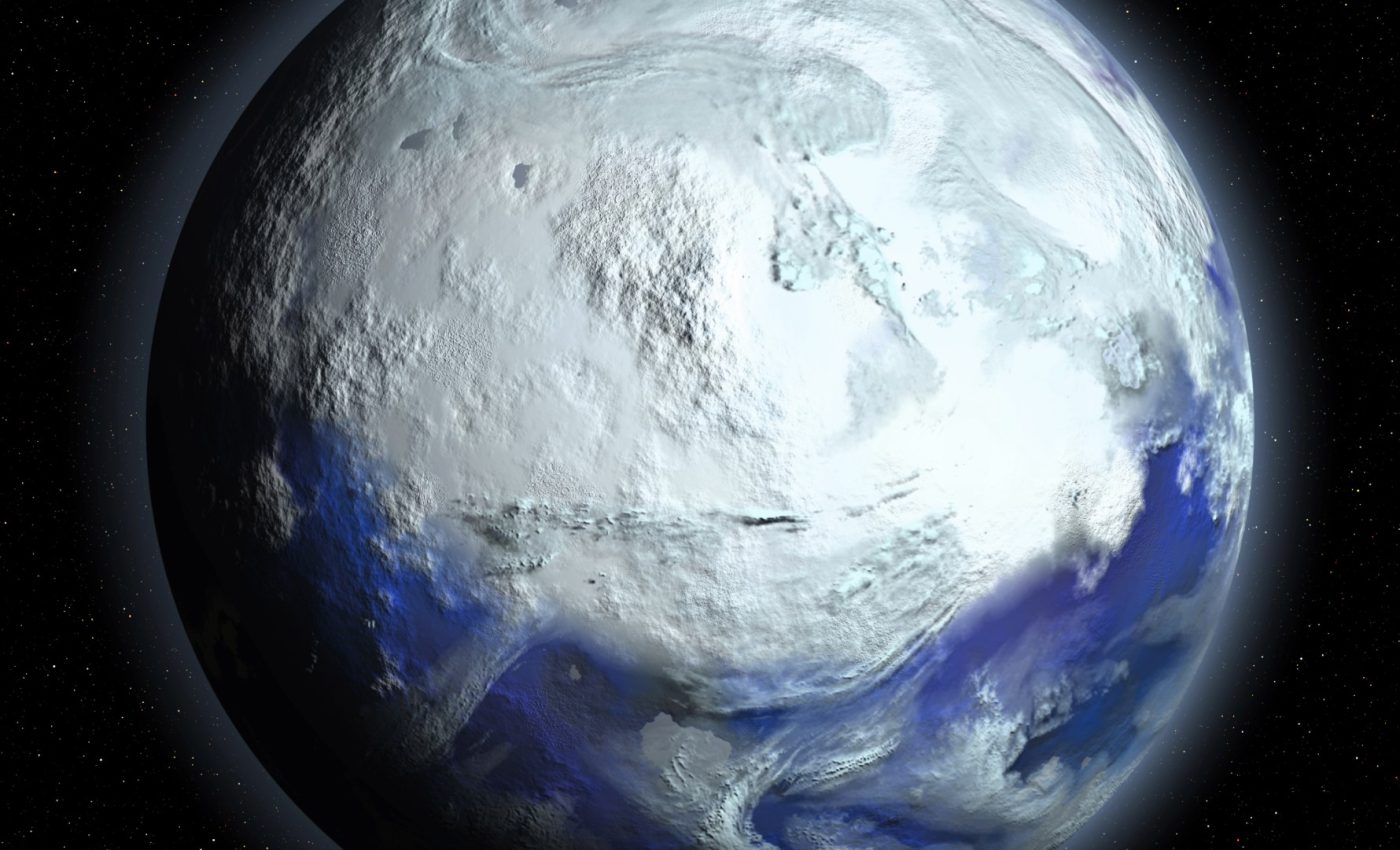
Ancient rocks suggest that Earth was once a 'snowball'
Imagine Earth, our blue planet, not with sparkling blue oceans and sweeping green terrains, but as a giant chunk of ice. This “Snowball Earth” scenario might not be just a figment of our imagination. Rather, it could very well have been Earth’s reality millions of years ago.
In an intriguing new study conducted by the University of Colorado Boulder, researchers have provided compelling evidence indicating that giant glaciers cloaked our Earth all the way to its equator hundreds of millions of years ago. This icy makeover would have turned our beautiful planet into a celestial icicle.
Ice Age and Snowball Earth
This study comes as a major breakthrough for supporters of an enduring theory known as Snowball Earth.
According to this theory, from around 720 to 635 million years ago, an array of events radically altered the climate of our planet. The temperatures plummeted and huge ice sheets, possibly several miles thick, enveloped our planet from pole to pole.
“This study presents the first physical evidence that Snowball Earth reached the heart of continents at the equator,” noted Liam Courtney-Davies, the lead author of the new study and a postdoctoral researcher in the Department of Geological Sciences at CU Boulder.
The team of co-authors included Rebecca Flowers, a professor of geological sciences at CU Boulder, and researchers from Colorado College, University of California, Santa Barbara, and University of California, Berkeley.
Rocky mountains hold the key
The researchers centered their focus on the Front Range of Colorado’s Rocky Mountains. A charming array of rocks, lovingly nicknamed the Tavakaiv or “Tava” sandstones, reside here. According to Courtney-Davies, these rocks hold the coveted key to our planet’s frigid past.
The geologists utilized a dating technique known as laser ablation mass spectrometry. This is a method that frees some of the atoms inside the minerals by zapping them with lasers.
Through this process, the scientists discovered that these rocks were forced underground between about 690 to 660 million years ago, most likely due to the immense weight of the overlying glaciers.
Snowball Earth beyond geology
But the implications of this study are not restricted to the realm of geology.
Courtney-Davies noted that the findings also have profound implications for understanding a critical phase in the evolution of life on Earth. The theory goes that the first multicellular organisms possibly made their appearance in our oceans right after Snowball Earth thawed out.
“You have the climate evolving, and you have life evolving with it. All of these things happened during Snowball Earth upheaval,” explained Courtney-Davies. “We have to better characterize this entire time period to understand how we and the planet evolved together.”
Snowball Earth theory
Ever since the term “Snowball Earth” was first proposed in a 1992 paper by American geologist Joseph Kirschvink, it has prompted substantial debate among scientists.
While geologists have indeed discovered the signs of thick ice from this era in ancient coastal areas, evidence within the interior of continents near the equator has been conspicuously absent.
Enter Colorado. Hundreds of millions of years ago, Colorado was not positioned at the northern latitudes where it is today.
In fact, it was snugly placed over the equator as an integral part of the ancient supercontinent Laurentia. If glaciers did indeed form here, it implies they could have formed just about anywhere.
Unearthing the past
Eager to uncover this elusive missing piece of the Snowball Earth puzzle, Courtney-Davies and his team turned to the Tava sandstones. These sandstones, predominantly visible around Pikes Peak, may appear as average yellow-brown rocks to an untrained eye. But to a geologist, they tell an extraordinary tale.
These features likely began as sands at Colorado’s surface. However, certain forces pushed them underground, akin to claws digging into the Earth’s crust. Courtney-Davies wanted to determine whether these sandstones were also linked to the presence of ice sheets.
To do so, the scientists calculated the ages of mineral veins traversing these features. They collected minute samples of the minerals, rich in iron oxide (essentially rust), and zapped them with a laser.
Consequently, the minerals released small quantities of the radioactive element uranium. Since uranium atoms decay into lead at a constant rate, the team used them as a timekeeper to determine the age of these rocks.
Broader implications of the study
The findings implied that the Tava sandstone had indeed been forced underground during the Snowball Earth period. The team suspects that thick ice sheets formed over Colorado at the time, subjecting the sands to tremendous pressure, and ultimately, pushing them into the bedrock below.
“We’re excited that we had the opportunity to unravel the story of the only Snowball Earth deposits that have so far been identified in Colorado,” said Flowers.
The entrepreneurial researchers are not ones to rest on their laurels, though. If such features formed in Colorado during Snowball Earth, they could very well have formed in other parts of North America.
“We want to get the word out so that others try and find these features and help us build a more complete picture of Snowball Earth,” noted Courtney-Davies.
So, next time you find yourself staring at an ice cube, consider this: once upon a time, our entire planet might have looked just like that. A tiny, frozen ball suspended in the vast expanse of space. Sounds like a chilling tale, doesn’t it?
The study is published in the journal Proceedings of the National Academy of Sciences.
—–
Like what you read? Subscribe to our newsletter for engaging articles, exclusive content, and the latest updates.
Check us out on EarthSnap, a free app brought to you by Eric Ralls and Earth.com.
—–













